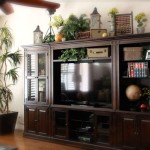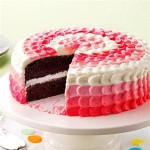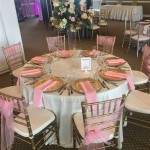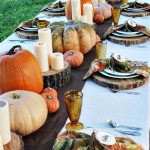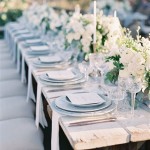Gold Flakes For Cake Decorating: A Comprehensive Guide
Gold flakes have emerged as a luxurious and visually striking component in cake decorating, transforming ordinary desserts into edible works of art. The application of gold flakes adds a touch of elegance and sophistication, appealing to both amateur bakers seeking to elevate their creations and professional pastry chefs aiming for a high-end finish. This article provides a detailed exploration of gold flakes, their types, application techniques, safety considerations, and storage methods for cake decorating purposes.
Understanding Edible Gold Flakes
Edible gold flakes are composed of pure gold (typically 23-24 karat). The karat value indicates the purity level of the gold; higher karat values signify a greater proportion of gold and fewer alloying metals. Gold used for consumption must be of a high karat to ensure that it is inert and safe for ingestion. It is crucial to verify that the gold flakes purchased are explicitly labeled as "edible" or "food-grade" from a reputable supplier. This labeling guarantees that the product meets stringent safety standards and is free from harmful contaminants.
The visual appeal of gold flakes stems from their inherent luster and reflective properties. When applied to cake surfaces, they catch the light, creating a shimmering effect that enhances the overall aesthetic. The size and shape of gold flakes can vary, ranging from finely milled dust to larger, more prominent pieces. This variety allows for diverse design possibilities, from subtle accents to bold, eye-catching displays.
Beyond aesthetics, gold flakes are essentially tasteless and odorless, meaning they do not alter the flavor profile of the cake. This neutrality is advantageous because it allows the other flavors in the cake to remain the focus. The primary contribution of gold flakes is visual, providing a luxurious and memorable experience for the consumer.
The history of using gold in food dates back centuries, with records indicating its use in ancient civilizations for medicinal and decorative purposes. Today, the production of edible gold flakes adheres to strict regulations to ensure consumer safety. Manufacturing processes involve meticulous refining, shaping, and packaging to prevent contamination and maintain the integrity of the gold.
The cost of edible gold flakes can be relatively high, reflecting the value of gold and the intricate production processes involved. The quantity required for cake decoration depends on the desired effect, ranging from a light dusting on a few accents to covering entire tiers. It is essential to plan the design and estimate the required amount of gold flakes before making a purchase to manage expenses effectively.
Application Techniques for Gold Flakes on Cakes
The successful application of gold flakes requires careful planning and execution. Several techniques can be employed to achieve different effects, each suited to various cake designs and skill levels. One common method involves using a fine brush to gently pick up and place individual gold flakes onto the cake surface. This technique is ideal for precise placement and creating intricate patterns.
For larger areas or a more scattered effect, gold flakes can be applied using tweezers or small spatulas. This method allows for greater control over the distribution of the flakes, ensuring an even and consistent coverage. When using tweezers, it's important to handle the flakes delicately to prevent them from crumbling or sticking to the implements.
Another technique involves creating a "glue" using a small amount of edible adhesive, such as piping gel or thinned-out corn syrup. This adhesive is applied sparingly to the areas where the gold flakes are desired, providing a tacky surface for the flakes to adhere to. This method is particularly useful for securing gold flakes to vertical surfaces or intricate details on the cake.
When applying gold flakes to buttercream frosting, it's crucial to ensure that the frosting is firm and slightly chilled. This prevents the flakes from sinking into the frosting and maintains their visibility. For fondant-covered cakes, the surface should be lightly moistened with a fine mist of water or edible glue to promote adhesion.
The environment in which the gold flakes are applied plays a significant role in the outcome. It is advisable to work in a clean, well-lit area, free from drafts that could scatter the flakes. Wearing gloves is recommended to prevent oils from the hands from transferring to the gold flakes and potentially affecting their appearance.
Experimentation with different application techniques is encouraged to discover the methods that best suit individual preferences and cake designs. Practicing on scrap pieces of frosting or fondant can help refine the technique and minimize errors when working on the final cake.
Consider the overall design of the cake when determining the placement of gold flakes. Strategically placing them to highlight specific features or create focal points can significantly enhance the visual impact of the cake. Whether used to accentuate edges, create geometric patterns, or add a touch of sparkle to floral decorations, gold flakes can elevate the cake to a new level of artistry.
Safety Considerations and Storage of Edible Gold Flakes
Ensuring the safety of edible gold flakes is paramount. It is imperative to purchase products from reputable suppliers who adhere to stringent quality control measures. Confirming that the gold flakes are certified as "edible" or "food-grade" is a critical step in the procurement process. This certification guarantees that the product meets regulatory standards and is safe for human consumption.
While pure gold is generally considered inert and non-toxic, impurities or alloying metals can pose potential health risks. Therefore, it is essential to avoid using gold flakes from unknown sources or those not specifically intended for culinary use. The source of the gold and its manufacturing processes should be transparent and verifiable.
Individuals with known allergies or sensitivities to metals should exercise caution when consuming gold flakes. Although allergic reactions to pure gold are rare, the presence of trace amounts of other metals in the flakes could trigger a reaction in susceptible individuals. It is advisable to consult with a healthcare professional if there are any concerns about potential allergic reactions.
The quantity of gold flakes consumed should be moderate. While gold is considered biologically inert, excessive consumption is not recommended. Using gold flakes as a decoration, rather than a primary ingredient, helps to minimize the amount ingested. The focus should remain on the flavor and composition of the cake, with gold flakes serving as an enhancement.
Proper storage of edible gold flakes is crucial to maintain their quality and prevent contamination. The flakes should be stored in a cool, dry place, away from direct sunlight and moisture. Exposure to humidity can cause the flakes to clump together or lose their luster.
The original packaging is often the best option for storing gold flakes. The packaging is typically designed to protect the flakes from light, air, and moisture. If the original packaging is not available, an airtight container made of glass or food-grade plastic can be used.
Avoid storing gold flakes near strong-smelling substances, as they can absorb odors. This can affect the sensory experience of eating the cake. Keeping the gold flakes separate from other ingredients and spices is essential for preserving their neutrality.
Inspect the gold flakes regularly for any signs of deterioration or contamination. Discard any flakes that appear discolored, clumped, or have an unusual odor. Maintaining good hygiene practices when handling gold flakes can help prevent contamination. Washing hands thoroughly before and after handling the flakes is essential.
By adhering to these safety considerations and storage guidelines, bakers can ensure that edible gold flakes are used responsibly and safely to create stunning and memorable cake decorations.

Edible Gold Leaf Transfer Sheets 23k Caljava

Wafer Paper Edible Gold Leaf American Cake Decorating

An Ode To Gold 3 Ways Lift A Cake Design With Edible Dont Tell Charles
Edible Genuine 100 Pure 24k Gold Leaf 15pcs For Decorate Cake Food Artist Lover

Gold Leaf Accent

How To Use Gold Leaf On Cakes

4 Ways To Use Gold Leaf On Luxury Wedding Cakes Hayleyelizabethcakedesign Com

Gold Leaf Macaron And Chocolate Coated Strawberry Ercream Cake Decorating How To

How To Use Gold Leaf On Cakes British Girl Bakes

How To Apply Edible Gold Silver Leaf A Cake Cabinet Blog
See Also


